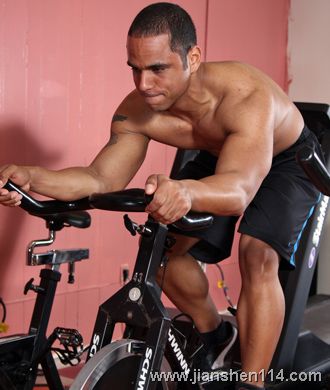A training method that can both be fitness and fun, called 10-20-30
Can high-intensity training become interesting? Researchers in Denmark have recently delved into this problem and developed a new high-intensity interval training method that is attractive even to those of us who are still too lazy to exercise. High-intensity interval training is usually performed in a short period of hard sprint, with a break in the middle. There are many places to recommend this training method. Many studies have shown that even a few minutes of such sprints can greatly improve physical and cardiovascular health. However, high-intensity interval training has a disadvantage that is easily overlooked. Many people didn't like it and quickly gave up training. Last year, New Zealand researchers in a very convincing study asked some adults who were overweight and out of shape to complete three months of high-intensity interval training. Trainers must use one of two common training methods. . One consists of four minutes of fast walking, rest, plus another four minutes of rapid rush. The other is to do a 30-second sprint, then rest, and repeat this three times. Some trainers are supervised while exercising, while others are training themselves. Both methods have made the volunteers better. The result is not the case. Very few participants have a significantly better body, especially the 30-second high-intensity training group. Researchers speculate that the reason may be that most participants gave up most or all of the training they should have done in the study early. This experimental result and other similar findings plagued Jens Bangsbo, a professor of physiology who studied high-intensity interval training at the University of Copenhagen, Denmark. In his laboratory research, repeated high-intensity training can make people more beautiful, faster, and healthier without exception. But the participants in the laboratory are generally highly conscious athletes, riding high-tech exercise bikes, and scientists are supervising them. These scientists in private will always induce participants to complete each stage of training. . Bangsbo noticed that this was not the case. So he and his colleagues began to study whether there is a more operative and more acceptable high-intensity interval training method. “We want to invent a fitness method that is suitable for everyone, from inexperienced sports rookies to top athletes,†says Bangsbo. After a period of experimentation and correction, they explored an alternative set of actions and named it the 10-20-30 training method . It became my favorite interval training method. 10-20-30 The main points of the training method are very simple. 30 seconds of jogging, slow cycling or (on a rowing machine) slow stroke, accelerate to normal frequency and hold for 20 seconds, then sprint for 10 seconds at full speed (obviously should be called 30-20-10 training method) But that's not easy to remember) and repeat the training. This special training method has a lot of appeal. It's easy to remember, and it's not technical, you don't need to be a member of a health club, and you don't need a heart rate monitor or flowchart like some complicated interval training methods. You don't even need a stopwatch to monitor these time changes of 30 seconds, 20 seconds, and 10 seconds. You can calculate your own time like me, so it seems to make time pass faster. Perhaps its biggest advantage is that the hard sprint lasts only 10 seconds, which is much easier for most of us than 30 or 4 minutes. But of course, if scientists want to recommend it, this training method must be effective. So in a research report published in the December issue of The Scandinavian Journal of Medicine & Science in Sports , Bangsbo and his colleagues began to work in a large group of ordinary people. The trainer tests this new training method. After visiting the running club in Denmark, the researchers found 132 middle-aged casual runners who were willing to use the 10-20-30 training method twice a week instead of the usual training method. As a result, the number of miles they run each week has been cut in half. The scientists also recruited 28 runners as a reference to continue their usual training methods. All runners underwent a physiological test before the start of the study, including a simulated 5 km race. The scientist then decides whether the runner decides to give up or continue the original training method. After eight weeks, almost all runners who chose the 10-20-30 training method are still training. When they took the 5km test again, their average score increased by 38 seconds. Most people have lower blood pressure, and other indicators have shown that their health has improved. The control group did not change. Of course, the athlete's exercise endurance and health will be improved by any common interval training method instead of the slower training method, which is why professional athletes will incorporate interval training into their training methods. But in Dr. Bangsbo's research, the 10-20-30 training method not only allows runners to achieve better results with less exercise, but also seems to make exercise a pleasant thing. “According to the running club report we studied, the social interaction between members increased greatly during the training period,†said Dr. Bangsbo, because most of them ran the fastest after five rounds of 10-20-30 sprints in each round. Members will turn around and run, so they will find themselves running behind slow members, and those who run slow will have a sense of satisfaction for themselves at least temporarily in the lead. You can also train alone or, like me, train with dogs. They are likely to love the sport because this is how they have been running. If you want to try the 10-20-30 training method, Dr. Bangsbo recommends using the 10-20-30 training method instead of one or two normal weekly trainings at the beginning. Warm up with a simple jog (also by cycling or boating) and then easily enter the training. The 30 second part should feel very relaxed; the next 20 seconds will be a bit difficult; the last 10 seconds will be sprinting. “Our goal is to run as far as possible in the last 10 seconds,†Dr. Bangsbo said. Do 5 10-30 training continuously without interruption, then rest for two minutes by standing or slow walking. Do five more such continuous trainings, rest, and then complete. After subtracting the warm-up and relaxation time, the whole process will last for 12 minutes. Bangsbo said that if your size is already great, you can come back five times without interruption. He also said that the next day to rest, or only very easy training, rather than two days of high-intensity training. Although in his study, runners in the 10-20-30 group were less likely to be injured than the reference group, "we recommend slowly."  FEATURE:
Plastic Pastry Cutters,Red Plastic Cookie Cutters,Plastic Christmas Cookie Cutter,Plastic Dinosaur Cookie Cutters YANGJIANG SHENGHAI INDUSTRIAL&TRADING CO., LTD , https://www.shenghaiyjs.com





